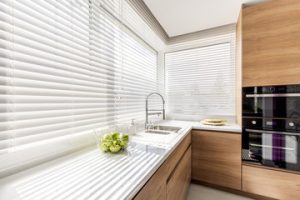Painting cabinets can be an intimidating DIY project. There’s a lot of conflicting information about the best way to paint them and whether or not the finished result will hold up over time. For a durable finish that will stand up to heavy use, try using an alkyd paint like Sherwin Williams or Valspar. These paints can be mixed in almost any color and require minimal prep.
Preparation

The right Kitchen Cabinet Painting Phoenix can transform your entire space. It can take an otherwise drab room and make it bold, bright and welcoming. However, the task isn’t always as easy as it looks – especially for DIYers. If you’re looking for an easier, faster and more professional way to handle your cabinet painting, it may be worth considering working with a professional service. Professional kitchen cabinet painters are trained to handle the job with the utmost care and attention to detail, saving you time and stress in the process.
Before you can even think of applying any paint, the surface needs to be prepared for its new layer. This will help ensure that the paint adheres well to the existing surface and won’t chip, peel or fade over time. It will also make sure that your finished result is a quality, lasting, beautiful finish.
Start by cleaning all surfaces that will be painted with a degreaser. This will help cut through any grease and grime, ensuring that the paint is able to bond evenly to the surface. Next, lightly sand all surfaces to be painted. Pay special attention to any recessed areas or crevices that will receive the most wear, as these tend to show dirt and dust more than others. Be careful not to sand too much, as this can cause the surface of your cabinets to become dull and shinier, rather than a smooth and glossy finish.
It’s also a good idea to tint your primer, as this will help the finished product match your chosen cabinet color more closely. Many professional cabinet painters will recommend tinting your primer to a shade that is approximately 50% lighter than the final color. This will allow you to achieve a beautiful, even finish with fewer coats of paint.
You’ll want to set up your work area in an area that’s out of the way, but accessible enough for you to move around during the painting process. If possible, a garage or workshop is ideal because it will offer ventilation and keep any fumes from entering your home. You’ll also want to protect your countertops and flooring, as well as any fixed appliances like microwaves or dishwashers. Tape rosin paper or plastic sheeting over them to avoid any accidental spills or drips.
Primer
The primer stage is an essential part of kitchen cabinet painting that helps to ensure your final product looks great. Using the right primer, along with quality cabinet paint and a high-quality finish coat, can transform your old cabinets into a fresh new look that lasts for years to come.
The first step in the priming process is to clean the surfaces of your cabinets thoroughly. Use a degreasing cleaner to remove any grease or oil that has built up over time on the surface of your cabinets. This will help prevent your finished paint job from chipping or cracking over time, and it will also ensure that the new layers of primer and paint adhere properly to the existing surface.
While you are cleaning the surfaces of your cabinets, make sure that you pay special attention to any areas near the stove where grease and food debris tends to build up more frequently. Using an abrasive pad dipped in a degreasing cleaner will work best to get rid of any dirt or grime that is stuck to the surface.
After you are done cleaning the surfaces of your cabinets, it is important to let them dry completely before you start priming and painting. This can take anywhere from one to four hours depending on the weather and temperature. You should not rush this step because a poorly dried primer can cause your final paint job to flake or peel.
The best cabinet primers are tinted to a shade that is approximately 50% lighter than the final color of your cabinet paint. This will provide excellent coverage while still allowing the underlying primer to show through in spots to protect the surface underneath from moisture and heat damage.
There are many different options for cabinet primer, paint and finish coats, so you should spend some time researching which products are the best fit for your project. Be sure to consider factors such as ease of application, odor levels and VOC content when making your decision. For example, N-Hance’s Cabinet and Kitchen Cabinet paints are formulated to resist the effects of cooking oils, moisture, and heat damage, so you can rest assured that your newly painted cabinets will be resistant to chipping and peeling for many years to come.
Paint
Cabinet painting is a way to add value to your home, change the overall look of a room, or refresh existing cabinets. It’s a less costly alternative to replacing the cabinets altogether, and it’s also a lot easier. However, it’s important to understand what makes a good cabinet paint job so that you don’t end up with an imperfect or even worse than old cabinet finish.
First, you’ll want to thoroughly clean your cabinets with a degreaser like TSP. This will remove any grease or oil that has built up and will ensure that the new paint adheres well. Next, you’ll need to patch any holes or imperfections and sand them down if necessary. Once you’ve done this, it’s time to prime. You’ll need to choose a primer specifically designed for cabinetry, such as N-Hance Primer. This is different than most regular latex primers, because it’s engineered to block bleed-through and other possible imperfections.
Another option is to choose a sherwin-williams or valspar cabinet enamel, which are water-based and can be tinted any color you’d like. They require a similar process to the satin enamels, and are more readily available than some of the more premium options.
If you’re feeling overwhelmed by the thought of painting your own kitchen cabinets, it may be best to contact a professional. They can give you a free estimate and teach you what to expect in terms of the cabinet painting process. They can also help you come up with a color scheme that will work for your space and make sure your cabinet painting job comes out amazing. They’ll use paints and materials that are specially formulated for cabinetry, so you can rest assured that your new cabinet finish will stand up to years of wear and tear.
Finish
A good paint job requires time to dry, so be sure you plan enough time for the project. Using a roller for large areas and a brush for details, coat the cabinets with your chosen color. Make sure to follow the manufacturer’s instructions for drying times. After the first coat dries, sand lightly to smooth out any rough spots. If necessary, apply a second coat to achieve full coverage. When you’re ready to reassemble the cabinets, use a labeling system to keep track of where each piece belongs, especially when it comes to hinges, handles, and knobs.
Once the paint dries, you can start putting the finishing touches on your kitchen. This is the perfect opportunity to consider a new look for your cabinetry. If you’re going for a more modern style, you might want to add some glass doors or other accessories. For a more rustic style, you could try adding a distressed finish to the cabinetry by lightly sanding the painted surface after it dries.
There are several different finishes available for cabinetry, and each has its own pros and cons. For example, high-gloss provides a durable finish that is stain resistant and easy to clean. However, it can highlight even minor cosmetic imperfections in the cabinetry. Semi-gloss is more subdued than gloss, but still reflects light and helps colors to appear brighter. This type of finish is also easier to wipe clean than matte or eggshell finishes.
Oil-based alkyd paints provide a durable, long-lasting finish. However, they take longer to dry and can have a strong odor. For a more environmentally friendly option, water-based alkyd or latex paints are available. You can find specially formulated cabinet paint at most hardware stores. Sherwin Williams Emerald line is one of the best choices for cabinetry, as it’s a low-VOC alkyd that’s self-leveling and provides a hard, smooth finish. It’s also available in satin or gloss. Other brands that offer cabinet-specific products include PPG Breakthrough and Ben Moore Command.



